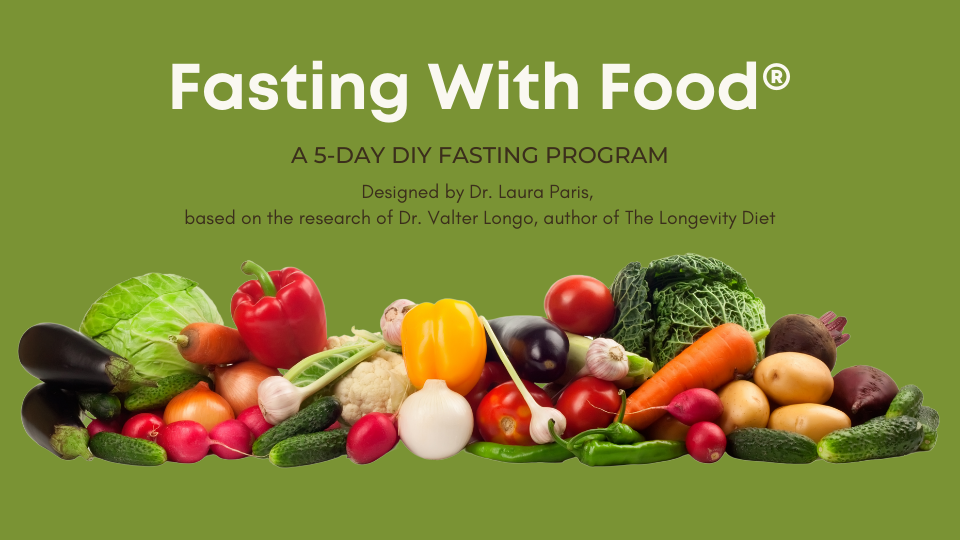
Are you ready to take charge of your health?I help women achieve vibrant health through all phases of life with a personalized, holistic approach.
SIGN UP FOR MY NEWSLETTER AND GET YOUR FREE GIFT:
A SMART WOMAN'S GUIDE TO HORMONE BALANCE

SIGN UP FOR MY NEWSLETTER AND GET YOUR FREE GIFT:
A SMART WOMAN'S GUIDE TO HORMONE BALANCE

In the U.S., one in eight households (12.8%) experience food insecurity, highlighting the importance of recognizing that fasting discussions often stem from a position of privilege. If you’re able, consider supporting organizations like Share Our Strength, which focuses on ending hunger both domestically and globally. Their No Kid Hungry campaign is a great place to start making a difference.
Fasting has become incredibly popular, but many people jump into it without fully understanding its effects, risks, or benefits. While fasting can provide significant health benefits, it’s not a one-size-fits-all solution. In fact, fasting done incorrectly can result in unintended consequences, especially for women. Issues like loss of lean body tissue, disordered eating, low blood sugar, and elevated stress hormones are common concerns, especially in the female populations I work with.
At the same time, I support intermittent fasting for its well-researched health benefits. Like many things in life, two opposing truths can exist: fasting can be both beneficial and risky. The key lies in understanding the right approach for your unique needs. In this post, I dive into the benefits, risks, and safe strategies for fasting.
When done safely, intentional fasting can boost your health and longevity. Here’s a look at some of the most notable benefits:
Many believe intermittent fasting magically results in weight loss, but it’s simply a result of consuming fewer calories during a shortened eating window. It’s not magic—it’s math. For many, fasting provides a structured, easier way to reduce calorie intake compared to traditional calorie counting.
Fasting has been shown to lower insulin resistance and improve metabolic health markers like blood pressure, glucose, hemoglobin A1C, and triglycerides. If reversing type 2 diabetes is your goal, look into the work of Dr. Jason Fung, a leading expert on fasting for diabetes management.
Fasting helps to lower proinflammatory cytokines such as IL-1β, IL-6, and TNF, alongside markers like C-reactive protein and homocysteine. This makes fasting a powerful tool for reducing inflammation and mitigating autoimmune responses. Learn more in my article How Intermittent Fasting Can Help Women with Autoimmunity.
During fasting, your cells undergo autophagy—a process that cleans out damaged parts and harmful pathogens. This can reboot mitochondria, prevent cancer and dementia, and slow aging. While autophagy is stimulated by fasting, studies suggest it may take up to 24-36 hours of fasting to initiate.
While fasting offers impressive benefits, it’s not suitable for everyone. If you fall into any of the following categories, fasting may not be safe for you:
Some groups need to be particularly cautious with fasting:
Intermittent fasting, extending your overnight fast to 14-16 hours, is generally safe for most people. It helps avoid muscle loss and nourishes metabolic benefits without the risks associated with longer fasting periods. However, one common mistake is pushing breakfast too late. For optimal benefits, eat a protein-rich breakfast within two hours of waking and finish eating earlier in the day.
For example, if you wake up at 7 AM, aim to eat 30 grams of protein by 9 AM, and finish dinner between 5-7 PM to allow for a 12-16 hour fast overnight.
If you’re aiming for the more profound benefits of longer fasts, like inflammation reduction, autoimmune reversal, and cancer prevention, consider incorporating 2-5 day fasts into your routine. The challenge with extended fasts is avoiding muscle loss and managing hunger.
This is where Dr. Valter Longo and the Fasting Mimicking Diet (FMD) come in. The FMD is a five-day diet that includes plant-based, reduced-calorie meals designed to preserve muscle while triggering autophagy. It can offer the same benefits as a water fast without the downsides of hunger and muscle loss.
You can follow Longo’s protocol by purchasing the ProLon® 5-day meal kit, which is designed explicitly for the FMD. Alternatively, we offer a DIY Fasting With Food® program that aligns with Paleo principles and allows for substitutions based on food sensitivities.
For optimal results, you can practice FMD every 1-3 months, depending on your health goals. Be sure to consult with a healthcare provider before starting any fasting protocol. If you’re tracking blood markers like glucose or inflammatory cytokines, test after three months to assess your progress.
Explore our Fasting With Food® program or grab a ProLon® kit to begin your journey toward better health today.



Dr. Laura Paris is a women’s health specialist who provides Acupuncture and Functional Medicine care at her two clinics in Capitola and Monterey, California. She also works with women remotely in the United States through telehealth appointments. Learn more about Laura here, and message her directly here.
Click the button to talk to Dr Laura on a 20-minute discovery phone call ($67)